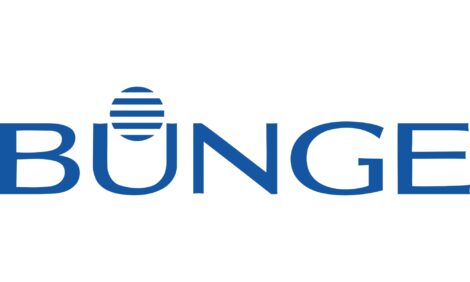



Viet Nam Hog Markets
VIET NAM - Generally, pig production in Vietnam is in difficulty. In late February, Vietnamese officials seized a large portion of illegal agents used for stimulating growth and lean meat production in pigs and cattle in a series of raids in Dong Nai province (near Ho Chi Minh City), writes Ron Lane.This large seizure has caused concern amongst consumers over the safety of the local pork in the marketplace. On top of this, pork consumption is limited by the fear of contaminated pork from these additives (example is clenbuterol) that can cause human health issues. However, more important to pork producers is the large negative effect on prices. As well, the temporary suspension of pork imports from Vietnam into China has made the price of pork in the marketplace, especially in the south, to have a significant reduction. Furthermore, estimates of the country's pig numbers are showing an increase between 3-4% over the same period in 2011. The above problems along with price discounts will cause more farmers to give up farming. Also, the price of replacement pigs or weaner pigs is under pressure with cheaper prices.
The government of Vietnam had launched a campaign to ban the use of illegal feed additives to stimulate lean pork a few years ago. More recently with more concerns from consumers over food safety especially meat safety, the government of Vietnam has been diligent in checking farms and suppliers for additives that could negatively impact the health of consumers. In their investigation, the government found many livestock units were using the banned products.
In the North, the price of finished pigs ranged from 45,500 to 49,000 VND/kg ($ 2.19 to $ 2.36 US/kg), down 14.5% from the previous month, while in the South, finished pigs averaged around 47,700 VND/kg ($2.29 US/kg), down 13% from the previous month. The area where the banned substances were located saw the local pig price drop substantially. Pig prices on the farms in the area of Thong Nhat, Dinh Quan and Dong Nai provinces, saw live pig prices from 40,000 to 41,000 VND/kg ($1.92 to $ 1.97 US/kg). The small, backyard farmers in this area only sold for 39,000 VND/kg ($1.88 US/kg). With these current prices, pork producers have losses of about 6,000 VND/kg ($0.29 US/kg) or about 600,000 VND/100 kg liveweight pig ($28.85 US per market pig) compared to the cost of production. Even with no evidence on the use of banned chemicals in the North part of the country, the price of live pigs in the Hanoi market also began to turn downward. Extra lean pork in Hanoi is purchased at 56,000 VND/kg ($ 2.69US/kg). Hams averaged 95,000 VND/kg ($4.57 US/kg) and bacon averaged 105,000 VND/kg ($5.05 US/kg). Despite lower prices, the consumption of pork from the market is slower.
In March, the price of some animal feed ingredients increased slightly from February: soybean oil 10,710 VND/kg ($0.515 US/kg) (up 7.4%) and fish meal 21,525 VND/kg ($1.035 US/kg) (up 7.7%). Prices of some raw materials decreased slightly: rice bran 6,510 VND/kg ($0.313 US/kg) (down 12.7%), lysine 54,600 VND/kg ($2.625 US/kg) (down 3.7%) and cassava 5,145 VND/kg ($0.247 US/kg) (down 2.0%). Other materials were stable: corn 7,350 VND/kg ($0.353 US/kg), and methionine 110,250 VND/kg ($5.30 US/kg) with only slight changes. Complete mixed feed for pigs from 60 kg to market weight was 9,334.50 VND/kg ($0.449/kg). This is up marginally from February.
April 2012
--General livestock production as estimated by the General Department of Statistics, saw a breakdown for the first 3 months (year on year with first quarter of 2011) as follows: buffalo and beef fell about 7%; dairy cattle continued to grow with the number of milk cows increasing by 10%; pigs in the country increased by 3-4% and poultry increased by 4-5%. Poultry has been affected by avian influenza, ,but because of the high flock increase at the end of last year, the overall flock has increased by 4-5% over the same period last year. Total production of meat in the first 3 months of 2012 is estimated at 1.35 million tons, an increase of 8-10% over the same period in 2011.
Pigs in the country increased by 3-4% over the same period as last year. However, farmers are still facing many difficulties caused by a decline in countrywide market hog prices. Added to this is the drop in the consumption of pork because of the fear that consumers have of the contaminated pork from additives (example clenbuterol) that are used to stimulate lean pork.
In the North part of the country, the price of market pigs ranged from 41,000 to 46,000 VND/kg ($1.97 US/kg to $ 2.21US/kg) while in the South, the average selling price for market pigs was about 42,500 VND/kg ($2.04 US/kg), down 4% from the previous month.
In April, the price of some animal feed ingredients increased slightly from March: soybean meal 11,500 VND/kg ($0.553 US/kg) (up 7.8%), cassava 5,460 VND/kg ($0.263 US/kg) (up 6.1%), lysine 55,650 VND/kg ($2.68 US/kg) (up 2.0%), corn 7,455 VND/kg ($ 0.358 US/kg) (up 1.4%) and methionine 111,300 VND/kg ($5.35 US/kg) (up 1.0%). Prices of some raw materials decreased slightly: rice bran 6,300 VND/kg ($0.303 US/kg) (down 3.2%) and fish meal 19,425 VND/kg ($0.934 US/kg) (down 9.8%).kg. Complete mixed feed for pigs from 60 kg to market weight was 9,261 VND/kg ($0.445/kg). This is down from March (0.8%).
In 2011, Vietnam imported over 8.9 million tonnes of feed ingredients valued at $3.7 million US. According to Le Ba Lich, the president of Vietnam Animal Feeds Association, the imports accounted for more than 62% of the inputs for feed production (total in Vietnam was 14.3 million tonnes of livestock feed manufactured). He said that 4.8 million tonnes were protein sources including soybean meal and meat and bone meal and 3.8 million tonnes were energy sources including corn, rice bran and wheat. In 2011, Vietnam produced 0.87 million tonnes of corn, 0.57 million tonnes of rice bran and 2.3 million tonnes of wheat.
What to look for over the next few months
There is some evidence of FMD in the area of Han Nam Province. With PRRS (Blue ear disease), the farmers took initiatives to prevent and to perform well the care, hygiene and disinfection of the barns in high risk areas. Currently, PRRS disease seems to be under control in the country.
FMD as of April 23rd, 2012 shows the efforts to control the spread of the disease. Monitoring in the provinces such as in the Red River Delta region, the northern mountainous region, North Central, South Central and Central Highland provinces, where previous epidemics occurred could be high risk locations for repeat outbreaks. With PRRS (Blue ear disease) there is general widespread in Dien Bien, Yen Bai and Nam Dinh areas. Risk of transmission is very high. According to the epidemiological characteristics of swine since 2007, the high risk areas are in the north when the weather turns quite hot.
Animal feed and raw materials: Estimated imports in April reached $155 million US, bringing the total value of imports of this commodity group in the first 4 months to about $ 618 million US, down 19.3% over the same period last year. In particular, imports from Italy increased significantly (10 times over the same period last year).
It is estimated that pig farms across the country have lost about 500 billion VND ($24 million US). Market pig prices in and near Ho Chi Minh City have plunged by nearly 20% to 42,000 VND/kg ($2.02 US/kg). Hog farmers are losing from 5,000 to 6,000 VND/kg ($0.24 to 0.29 US/kg). Since the use of banned substances to improve lean were found on farms in Dong Nai province , the price in this region has seen a severe drop. Their pigs are mainly supplied to Ho Chi Minh City. The province has 1261 farms with a total of 1.2 million pigs.
An April 23rd, 2012 meeting held in HCM by Ms. Deborah Chatsis, Ambassador of Canada to Vietnam and Mr. Martin Charron, Vice President for Marketing of the Association of Canada Pork International (CPI) said that Vietnam is one of the major potential markets for pork from Canada in the coming years and that CPI association is looking for opportunities to promote products “Clean Pork“ to the domestic enterprises and consumers. According to Charron, in 2011, the export value of pork accounted for nearly 6 million Canadian dollars to Vietnam. He also mentioned that there are two reasons for us to believe that Canada pork can gain a foothold in Vietnam's market. One is that consumer's living standards are improving in Vietnam. In addition, consumers want to know that the meat they consume ensures food safety. “This is an issue that Canada can meet easily“ said Charron (in conversation with the Saigon Times Online). The chief hurdle for importing pork into Vietnam relates to the Ministry of Finance-issued Circular 52/2009 on the adjustment of tariffs for imported meat. For pork, there are tariffs of 28% for fresh and chilled and 24% for frozen pork.
-According to the Ministry of Agriculture and Rural Development, Vietnam annually consumes about 3.3 million tons of pork.
According to General Statistics Office, the consumer price index (CPI) in March the country rose 0.16% over the previous month, rising 2.55% compared to the end of 2011. This is low even though prices of some commodities have increased. This is a very low figure compared to 1.37% in February and 1% in January 1.2012. The major reason for the increase was due to increased gas prices during the month. The price of food and catering services were down by 0.83%. Declining pork prices, the clenbuterol scare and increasing supply of pork meat has had an impact on the food section of CPI. In particular, food items decreased 1.21%, because the supply is relatively abundant. Also, the price tends to decrease after the period prior to Tet Holiday, when consumer demand ramps up substantially. Thus, it is also very low rate over the years (2009 if excluding the price factor rose 4.1%, 15.5% in 2010, up 11.9% in 2011).







